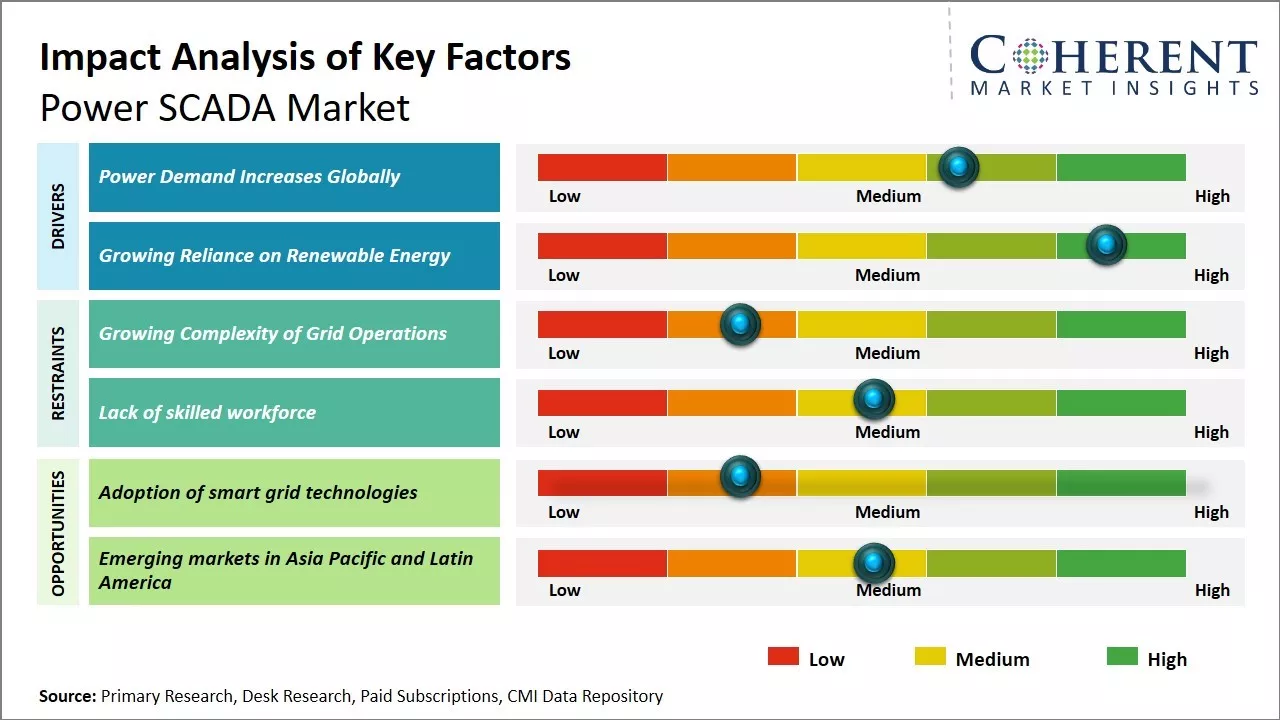The Power SCADA Market is estimated to be valued at USD 2.91 Bn in 2025 and is expected to reach USD 4.80 Bn by 2032, exhibiting a compound annual growth rate (CAGR) of 7.4% from 2025 to 2032.

To learn more about this report, Request sample copy
With the integration of renewable energy sources into existing power grids, implementation of advanced metering infrastructure, and emergence of microgrids, the market is projected to witness significant growth over the forecast period. The power SCADA market trend shows growing demand for cloud-based SCADA systems and analytics solutions that help utilities better manage grid operations and meet sustainability goals. Rising deployments of smart grid technologies also provide opportunities for SCADA providers to optimize grid management. However, market growth can be challenging due to cyber security threats on critical infrastructure and skilled workforce shortages faced by utilities globally.
Power Demand Increases Globally
As the global population and standards of living continues to increase rapidly, so does the demand placed on existing power generation and distribution infrastructure. Utilities across both developed and developing regions are investing heavily in expanding their power generation capacity and upgrading transmission networks to keep pace with rising electricity consumption. According to projections, global energy demand is expected to grow by as much as 30% over the next two decades. Meeting this level of demand will require a massive build-out of new power plants as well as modernization of the grids that deliver power to both urban and rural end-users. SCADA systems play a vital role in enabling utilities to optimize the performance of their assets to reliably meet growing electricity needs. With SCADA, grid operators gain real-time visibility across generation, transmission and distribution systems to pinpoint inefficiencies or constraints. When major demand spikes occur, for example during heat waves or times of peak industrial usage, SCADA allows automated or remote adjustments to routes power flows most effectively. It also facilitates the integration of renewable energy sources like solar and wind farms which exhibit variable output that must be carefully balanced with conventional generation resources. As power demand continues expanding unabated worldwide, utilities will increasingly turn to SCADA technologies to help upgrade and "future proof" their infrastructure for a higher capacity, smarter and more resilient grid.
Joining thousands of companies around the world committed to making the Excellent Business Solutions.
View All Our Clients